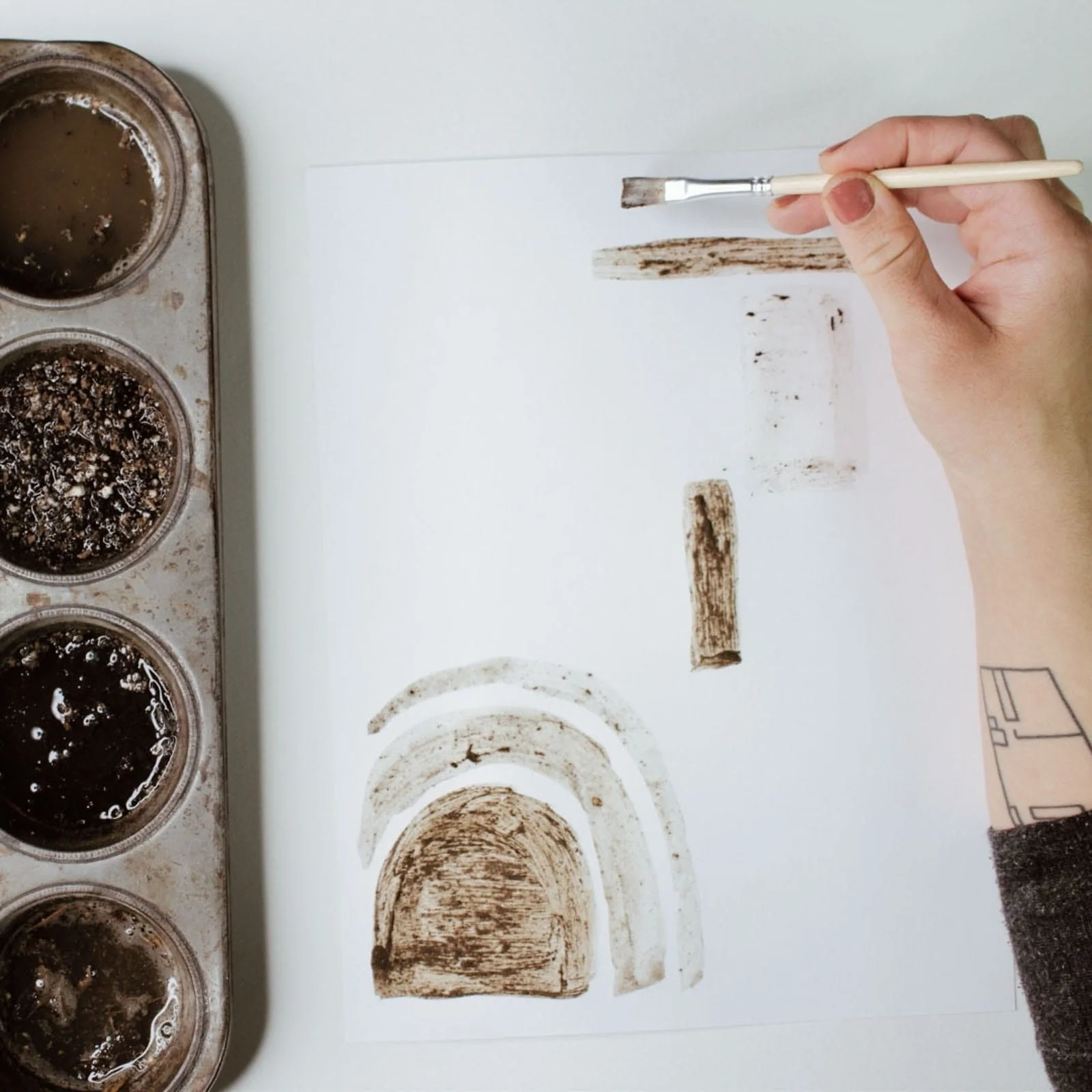Mud Paintings
This natural painting project is a hands-on way to introduce children to ancient art techniques. Just like early artists, your child will make their own paint from dirt and water—no synthetic materials required!
Why Try Mud Painting?
Encourages outdoor play and nature connection
Supports sensory exploration and fine motor skills
Offers a fun introduction to earth science and ancient history
Uses free, natural materials
Perfect for forest school, homeschooling, or preschool art time, read on to see how we did it.




Supplies:
Dirt in various shades (from your yard, garden, forest)
Water
Muffin tin or small containers
Wide-bristled paintbrush
Heavy paper or cardstock
Masking tape (optional, for securing your paper outside)
Directions:
Gather your dirt.
Head outdoors with your child to collect dirt or soil in different shades. Soil from different locations (forest floor, garden bed, riverbank) will create a variety of natural tones.Mix your mud paint.
Place a few tablespoons of dirt into each compartment of a muffin tin or into small containers. Add a bit of water and stir until you reach a smooth, paintable consistency. Too thick? Add a little more water. Too thin? Add more dirt.Set up your painting station outdoors.
Secure your cardstock to a surface with masking tape if needed. This helps prevent the paper from blowing away or curling as it dries.Start painting!
Use a wide-bristled brush to paint with your mud mixtures. Try different textures and colors. Watch how the earth’s natural pigments behave on the paper.
Extend the Learning
Soil science: Why is dirt different colors in different places?
Ancient art: How did early humans make paint?
Geology: Explore the layers of the earth and the components of soil.